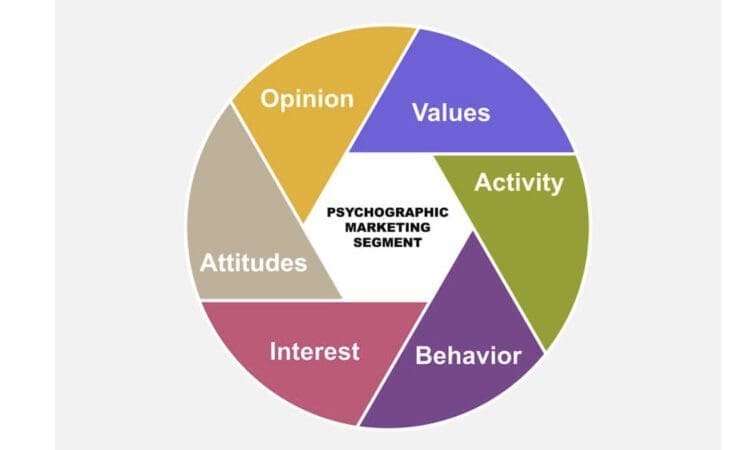Psychographic market segmentation is a powerful tool in modern marketing, enabling businesses to delve deeper into consumer psychology to tailor their strategies effectively. By understanding the underlying motivations, values, and lifestyles of their target audience, companies can create more personalized and impactful marketing campaigns.
The Key Elements of Psychographic Segmentation
Psychographic segmentation categorizes consumers based on psychological attributes such as personality traits, values, interests, lifestyles, and social class. Unlike demographic segmentation, which focuses on quantifiable factors like age or income, psychographic segmentation delves into qualitative aspects that influence consumer behavior. This approach provides insights into why consumers make certain choices, offering a more nuanced understanding of the target market.
1. Personality Traits and Characteristics
- Understanding whether consumers are introverted or extroverted, adventurous or cautious, helps in crafting messages that resonate with their inherent dispositions.
2. Values, Beliefs, and Attitudes
- Identifying what consumers hold important—such as environmental sustainability or technological innovation—allows brands to align their messaging with these core values.
3. Interests and Lifestyle Choices
- Insights into hobbies, recreational activities, and daily routines enable businesses to position their products in contexts that appeal to specific lifestyle choices.
4. Social Class and Cultural Influences
- Recognizing the impact of socioeconomic status and cultural background aids in tailoring products and marketing strategies that are culturally relevant and accessible.
How Psychographic Market Segmentation Works
Implementing psychographic segmentation involves several steps:
1. Data Collection Methods
- Gathering psychographic data can be complex and time-consuming compared to demographic or behavioral data. It often requires in-depth surveys, interviews, or observational research to understand consumers’ attitudes, values, and lifestyles.
2. Analyzing and Categorizing Customer Psychographics
- Once data is collected, businesses analyze patterns to identify distinct psychographic profiles. This analysis helps in understanding the diverse psychological factors that drive consumer decisions.
3. Creating Customer Personas Based on Psychographic Data
- Developing detailed personas that encapsulate the characteristics of each segment allows marketers to visualize and empathize with their target audiences, leading to more tailored and effective strategies.
Examples of Psychographic Market Segmentation in Business
Several companies have successfully leveraged psychographic segmentation:
Retail Industry
- A fashion brand might identify a segment of eco-conscious consumers who prioritize sustainable and ethically produced clothing. By aligning their product lines and marketing messages to highlight these attributes, the brand can attract and retain this specific customer base.
Technology Sector
- A tech company may target early adopters and tech enthusiasts by emphasizing cutting-edge features and innovation in their products, appealing to consumers who value being at the forefront of technology trends.
Benefits of Using Psychographic Segmentation
Employing psychographic segmentation offers numerous advantages:
1. Enhanced Customer Targeting and Personalization
- By understanding the psychological drivers of consumers, businesses can create personalized marketing messages that resonate on a deeper level, leading to increased engagement and conversion rates.
2. Improved Brand Loyalty and Engagement
- Aligning products and services with the core values and lifestyles of consumers fosters a stronger emotional connection, enhancing brand loyalty and encouraging repeat business.
3. Better Product Development and Innovation
- Insights into consumer interests and preferences guide the development of products that meet the specific desires of different segments, leading to more successful product launches and innovations.
Challenges and Limitations
Despite its benefits, psychographic segmentation presents certain challenges:
1. Difficulties in Gathering Accurate Psychographic Data
- Collecting reliable psychographic data can be challenging due to its subjective nature. It often requires self-reported information, which can lead to biases or inaccuracies.
2. Ethical Considerations in Consumer Profiling
- The collection and use of psychographic data raise privacy concerns, requiring careful navigation and compliance with data protection regulations.
Conclusion
Psychographic market segmentation is a valuable approach for businesses seeking to connect with consumers on a deeper, more personal level. By understanding the psychological factors that influence purchasing decisions, companies can craft tailored marketing strategies, foster brand loyalty, and drive innovation. However, it is essential to approach this method with careful consideration of data collection challenges and ethical implications to ensure responsible and effective application.
References
- Lesser, J. A., & Barthol, S. M. (2024). Advancing Theory in Psychographic Market Segmentation Research. Digital Commons
- Bayarsaikhan, S., Batsukh, D., & Yadamsuren, O. (2022). Psychographic Segmentation of Saving Market. ResearchGate
- Customer Segmentation as a Revenue Generator for Profit Purposes. (2023). MDPI


